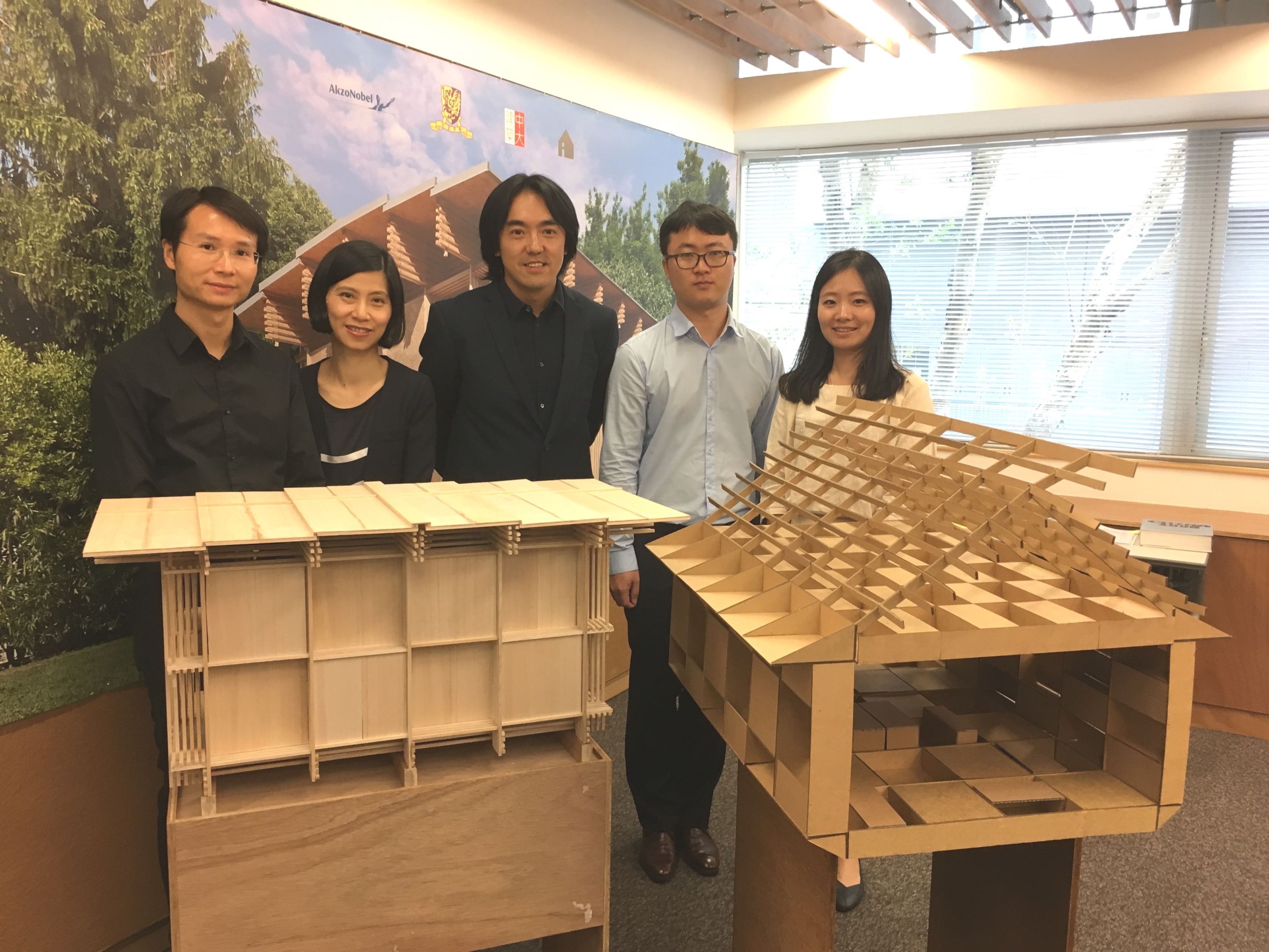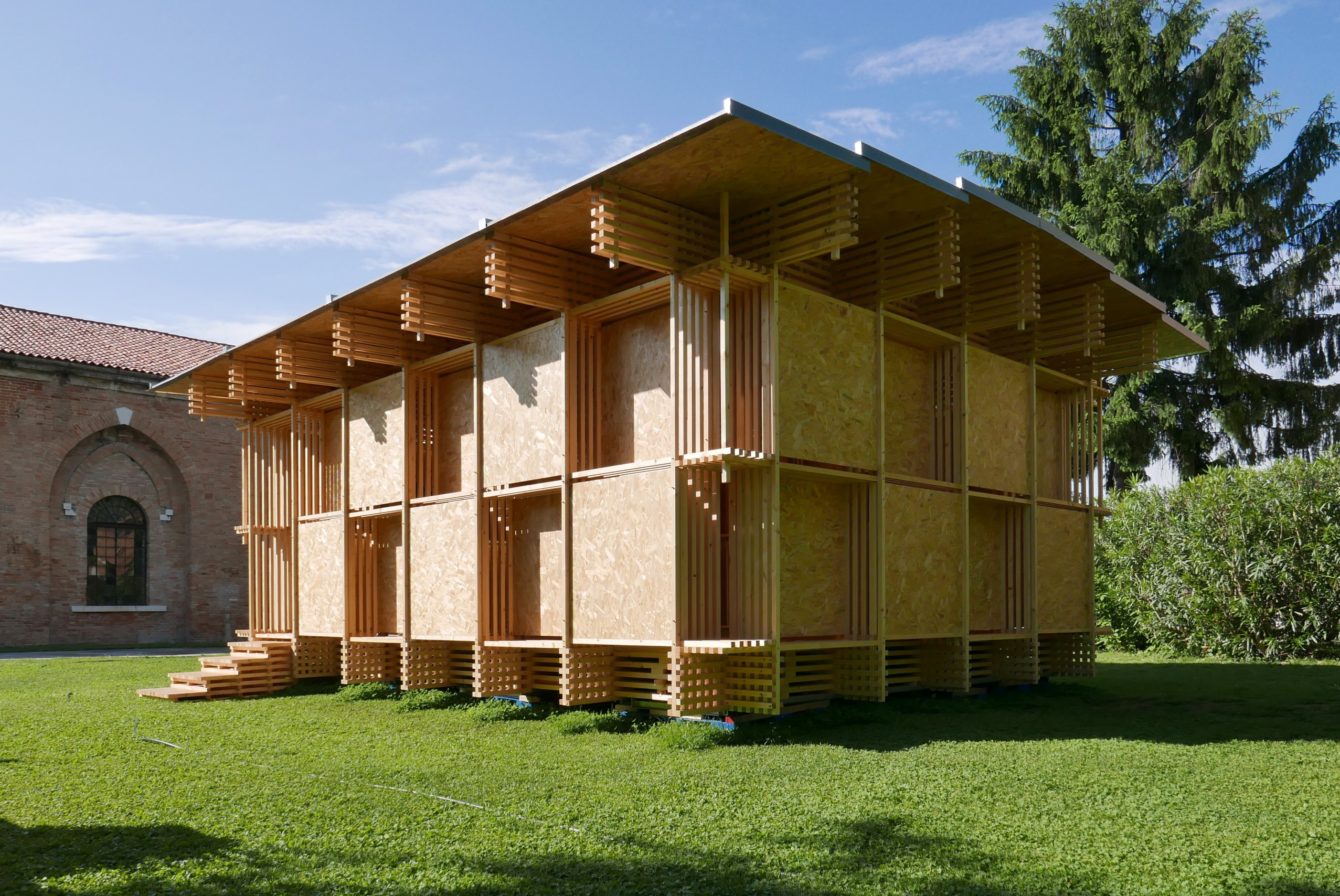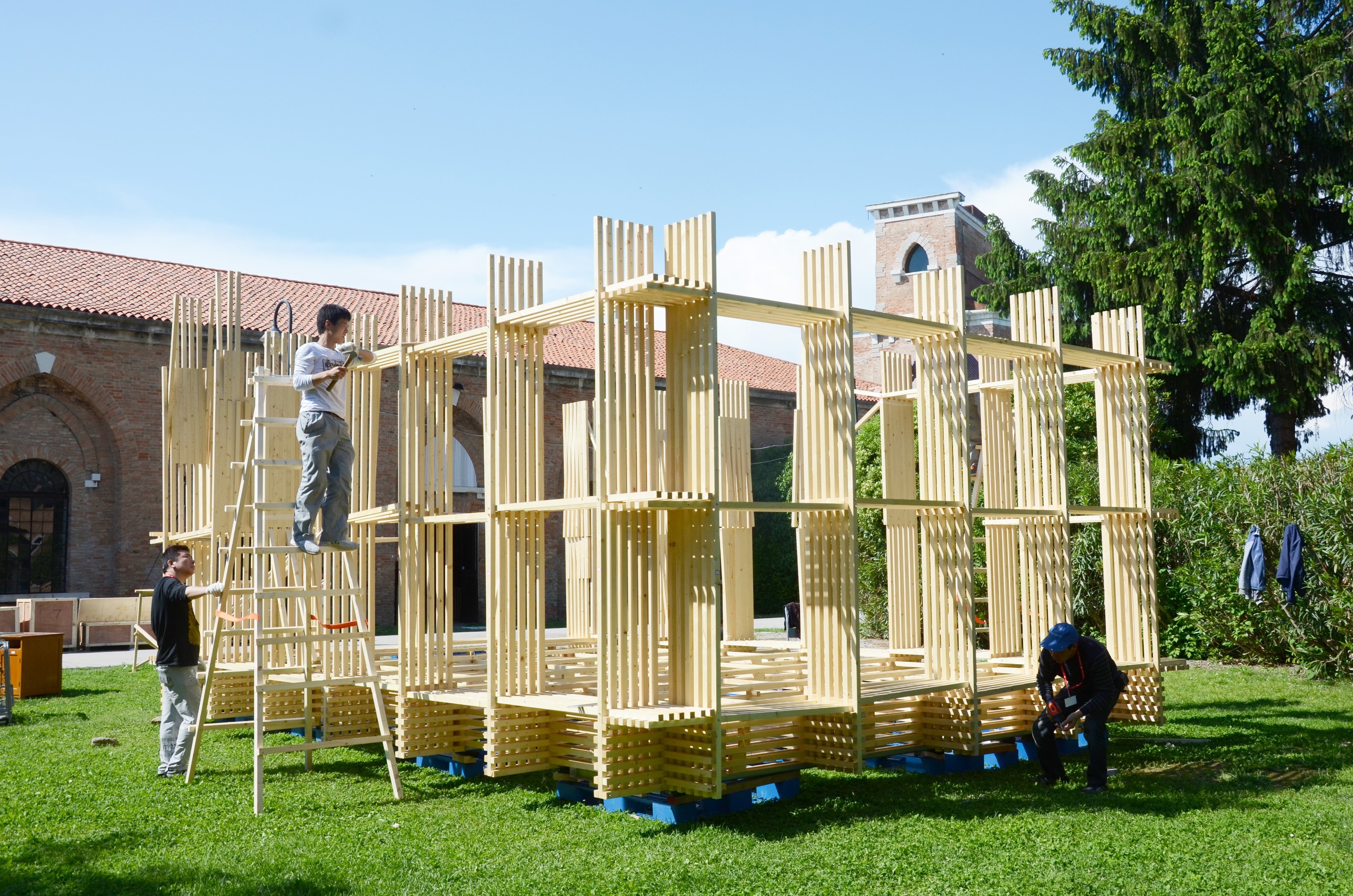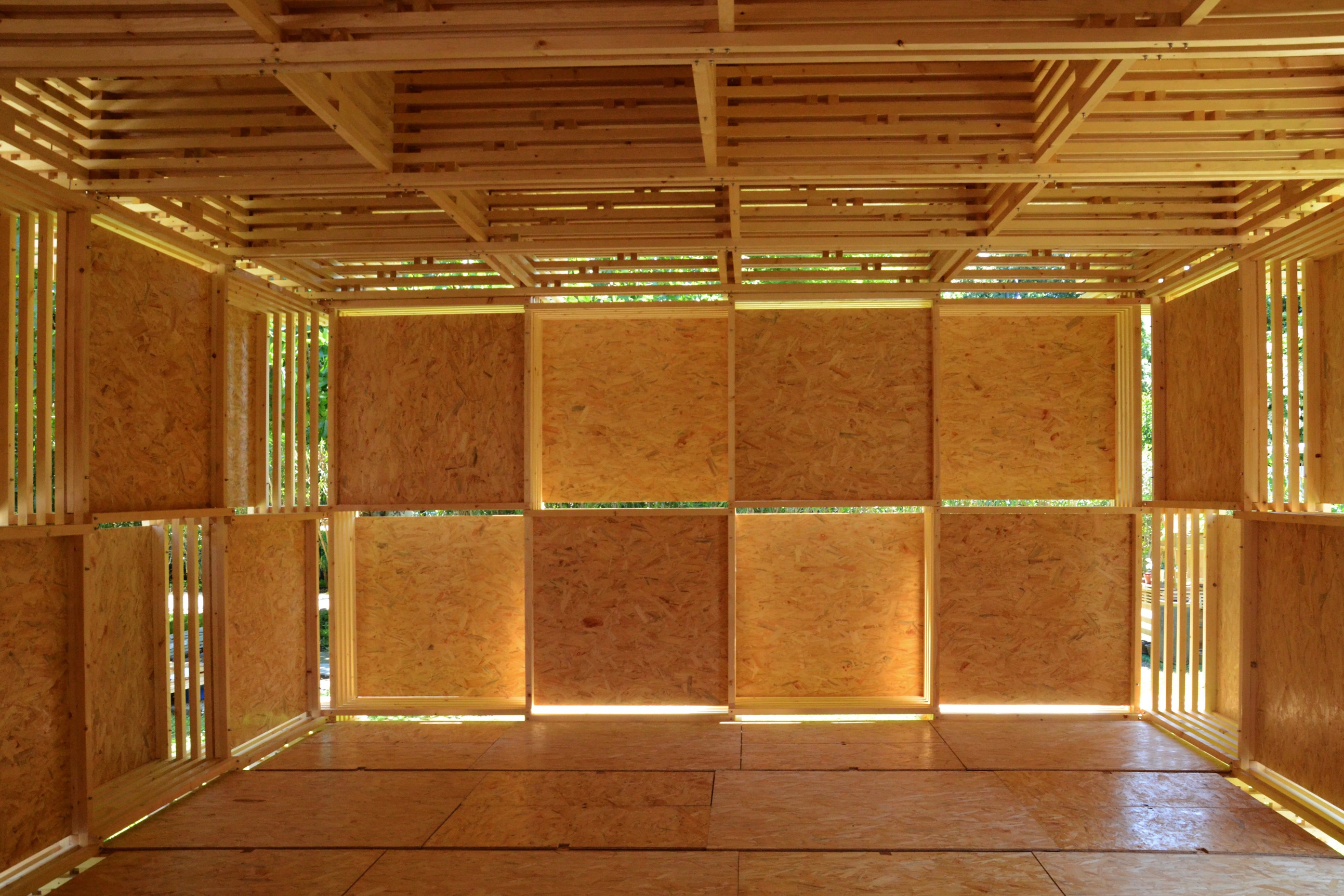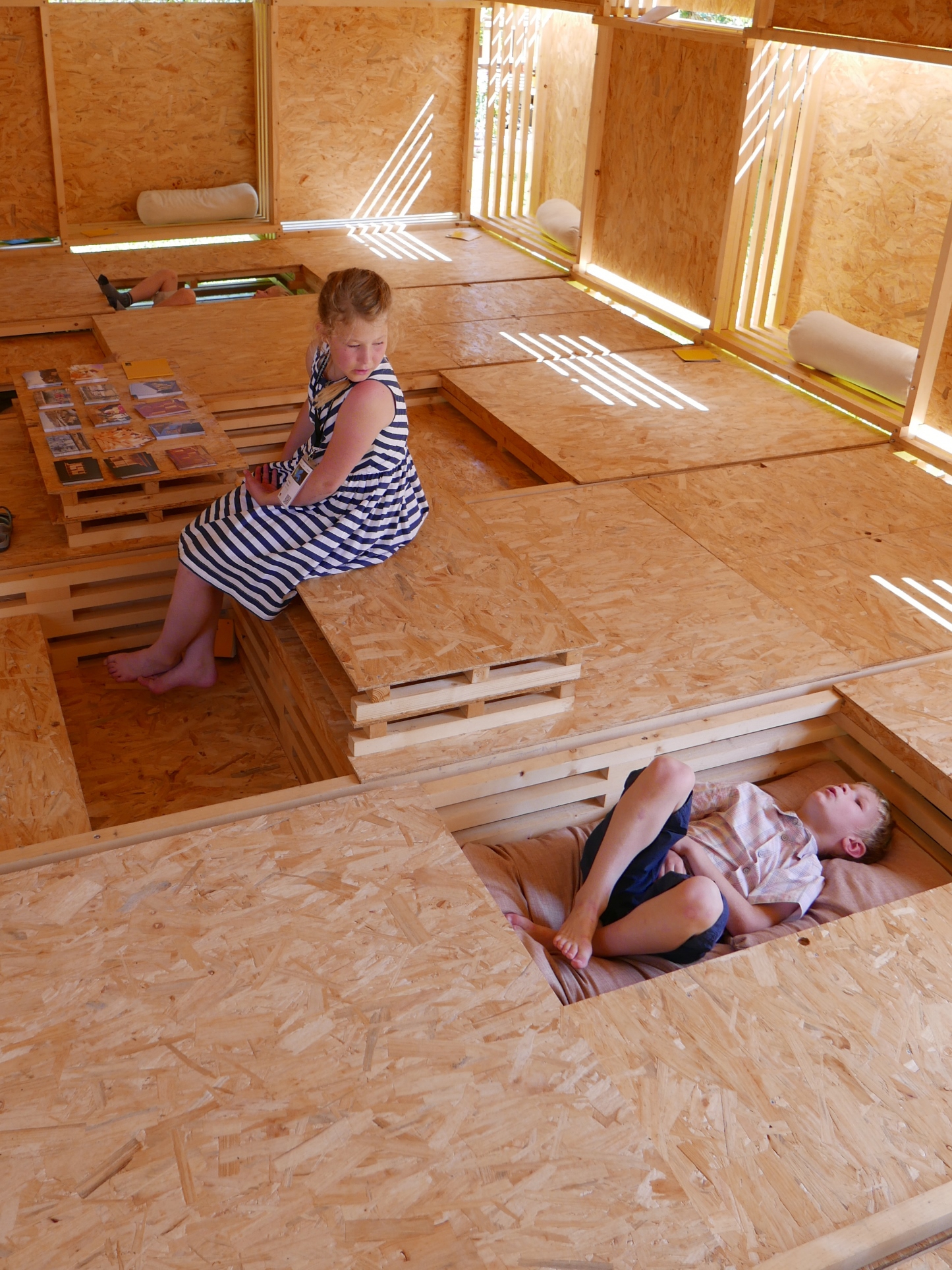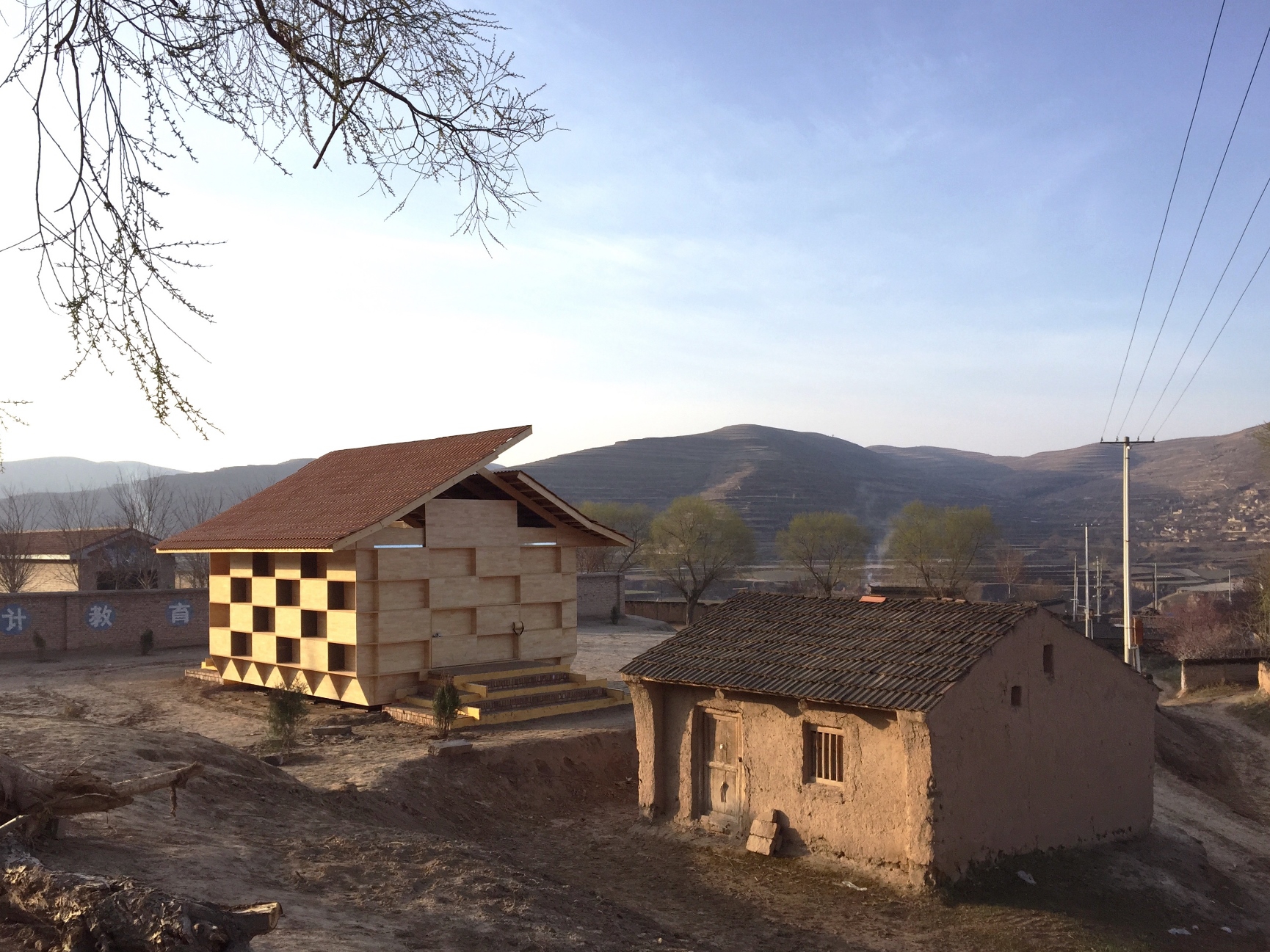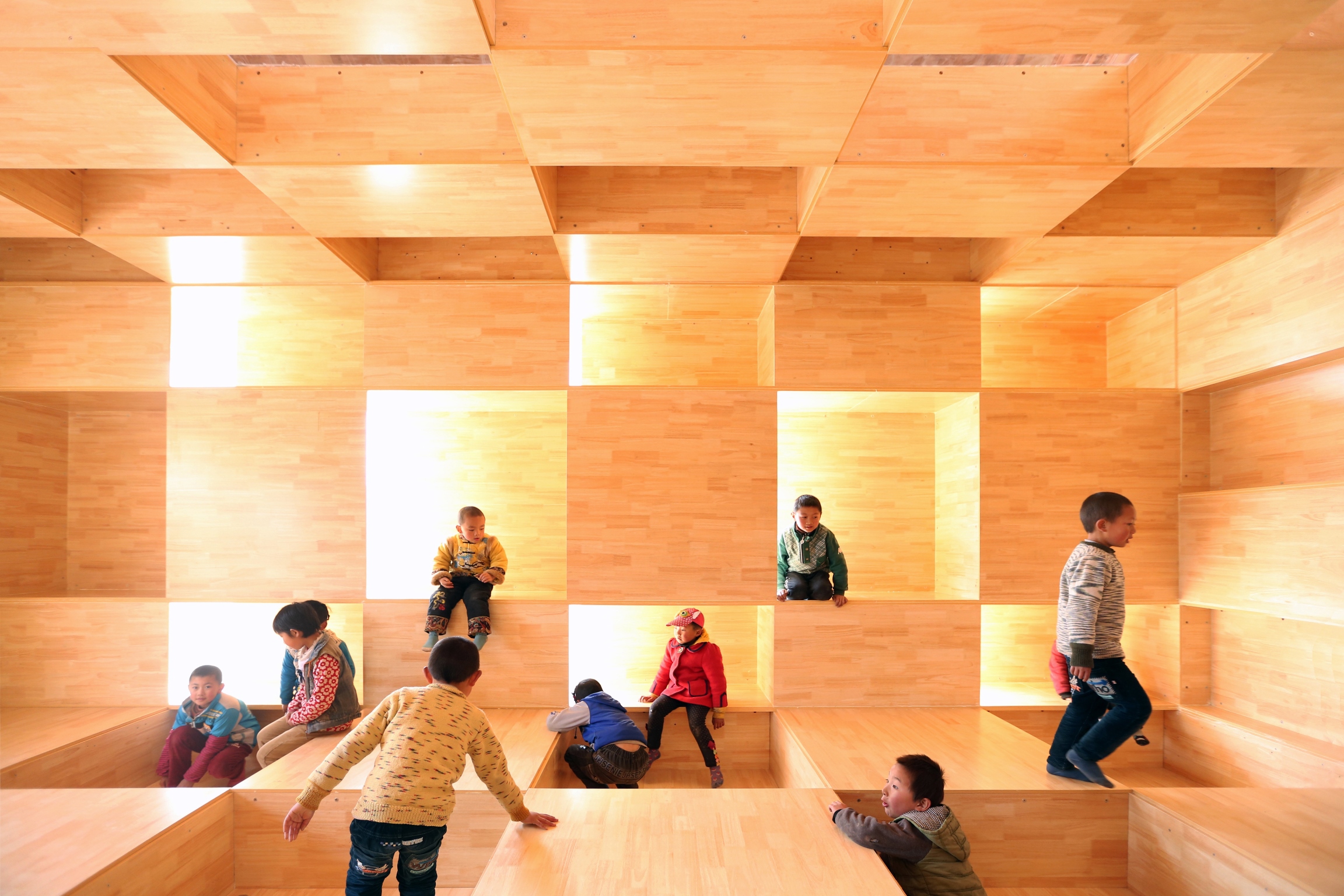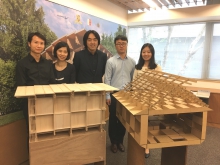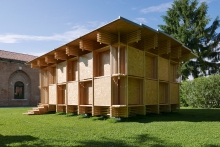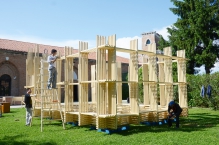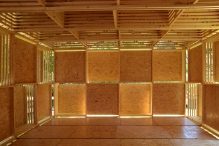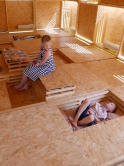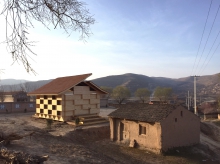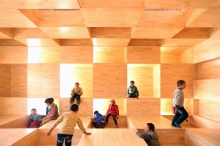CUHK
News Centre
From Rural China to World’s Most Famous Architectural ExhibitionDou Pavilion by CUHK Architect Becomes Spotlight at 2016 Venice Biennale
Dou Pavilion, designed by Prof. Zhu Jingxiang, Associate Professor of the School of Architecture at The Chinese University of Hong Kong (CUHK), has brought pre-fab building technology and its social impact to the forefront of the 2016 Venice Bienalle, the world’s most famous architectural exhibition. It is one of the few buildings in the exhibition that were built on a 1:1 scale to their original models and has become an important spot for visitors in Venice today.
Professor Zhu has been working on pre-fab light-weight constructions for a decade and has developed a group of prototypes, applied in various projects in mainland China and overseas. In the 2016 Venice Biennale, he was invited to join the architect team of the China Pavilion and assembled a one-storey wooden structure, Dou Pavilion. It originates in one of Professor Zhu’s projects, a kindergarten model built in Gansu Province in China, and has been adapted to the Mediterranean climate and shipping requirements. It is composed of concave and convex squares, both inside and out, which create a fluctuant interface for visitors to discover individual relations with the structure. Components of the wood pavilion were manufactured in mainland China, packed carefully and shipped to Venice. The precision in its design made it possible to be assembled on site within 3 days.
In 2015, a number of these models, known also as Checkered Playrooms, were assembled by Professor Zhu’s team in remote villages in Gansu, in collaboration with the Western Sunshine Rural Development Foundation, to promote basic preschool education for more than 1,000 children between ages 2 and 6. In the rural areas of the western provinces in China, thousands of children have insufficient pre-education facilities, as well as too few teachers. To attract more teachers to these areas and provide modern facilities for the children, Professor Zhu’s team collaborated with Western Sunshine and designed the Checkered Playrooms. Since the construction of the first playroom, the demand for the building-product has been increasing. Currently the playrooms are being built in other places such as Chongqing and Yunnan.
The playful design makes these playrooms a hit with their users. Children enjoy hanging out in the playrooms even without any toys. Different from the traditional classroom design, the ‘boxes’ on the walls and on the floor are made kids-friendly, and the children always love to sit or lie in the boxes, and explore other ways to occupy these spaces. The spatial exploration in the playrooms has become an important supplement to the original school curriculum, because it proved to be helpful to the children’s physical and mental development. Equally significant is their impact on community building. The components of the structure were made so light and user-friendly that assembling the buildings created opportunities to involve members of the local community and bring them together.
The playroom model will be put into mass production to serve more children in rural areas in mainland China, a development supported by Western Sunshine and other charity foundations. The generic design of the product can be adapted to various needs of charity groups and local contexts. Professor Zhu suggested that it is also significant for the future development of Hong Kong, where the urban landscape is by and large occupied by concrete structures. The increasing pressure on land is calling for a more flexible solution from spatial development and design. The light-weight building system can be easily adapted to the complexity of the Hong Kong landscape. For example, it can be easily installed on top of an existing heavy structure to provide a temporary shelter or an additional function, without breaking or changing the original structure. It is more efficient in cost, safe in construction, and the concrete-free installation and manufacturing are also more environment-friendly.
The Dou Pavilion, after serving its full-term in Venice at the end of 2016, will be transported to and reassembled in Hong Kong, in order to demonstrate the sustainability of such a light-weight building technology.
Mr. Liang Jingyu, curator of the Chinese Pavilion, commented that Professor Zhu’s work deserves public attention because it demonstrates the possibility of ‘less human intervention playing a role in a larger scope’. It also demonstrates the potential ‘to change the current trends of inefficient, energy-consuming, little-or-no design, and environment-destroying housing practices in the vast rural areas.’
The assembly of Dou Pavilion was made possible by AkzoNobel, a leading global paints and coatings company and a major producer of specialty chemicals, who is also the key partner of the China Pavilion at the 2016 Venice Biennale. Dr. Lin Liangqi, President of AkzoNobel China and Managing Director of the company’s Decorative Paints business in China and North Asia, said, in congratulating Professor Zhu and his team on such a brilliant architecture project, ‘The Dou Pavilion is a great example of how architects contribute to society by creating architectural designs that are innovative, sustainable and full of humanity. The partnership clearly demonstrates our commitment to making people’s lives more liveable and inspiring by providing everyday essentials that help to build more ‘human’ cities. AkzoNobel is honoured and proud to be playing its part.’ AkzoNobel’s support to Professor Zhu’s projects dates back to 2015, when a charity school in Sichuan was designed to bring light to the education of the local orphans. The company provided its eco paint for the school’s dormitories to maintain a healthy and colorful environment.
(From left) Mr. Chenghui Wu, Project Manager of Checkered Playroom and Dou Pavilion; Ms. Chorling Wong, Marketing Manager of AkzoNobel Decorative Paints in North Asia; Prof. Jingxiang Zhu, Associate Professor, School of Architecture, CUHK and two research assistants of the School.
The Dou Pavilion designed by Prof. Zhu Jingxiang of CUHK School of Architecture is highly acclaimed at the 2016 Venice Bienalle.
The Dou Pavilion originates in the Checkered Playroom, a kindergarten model built in Gansu Province in China.


